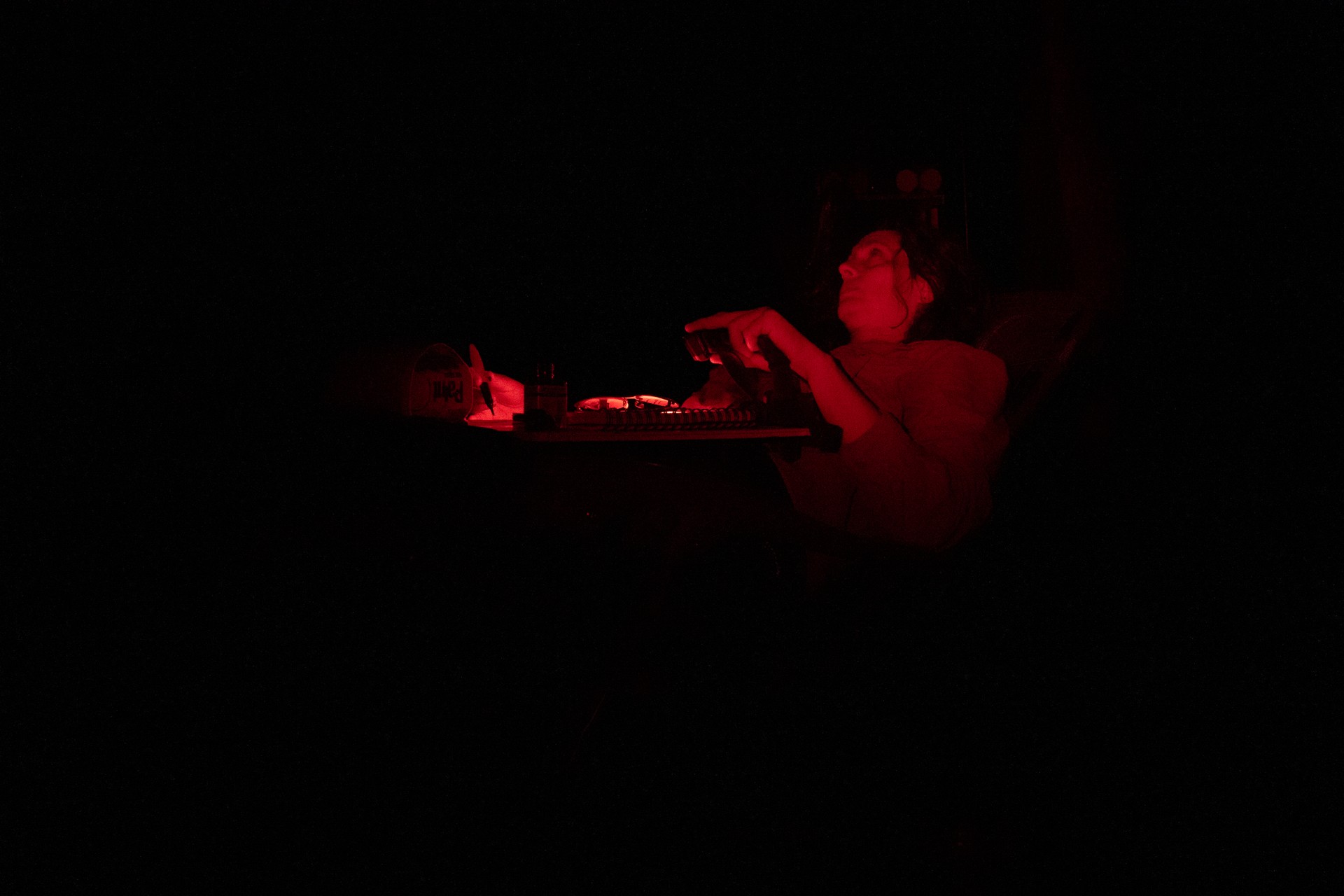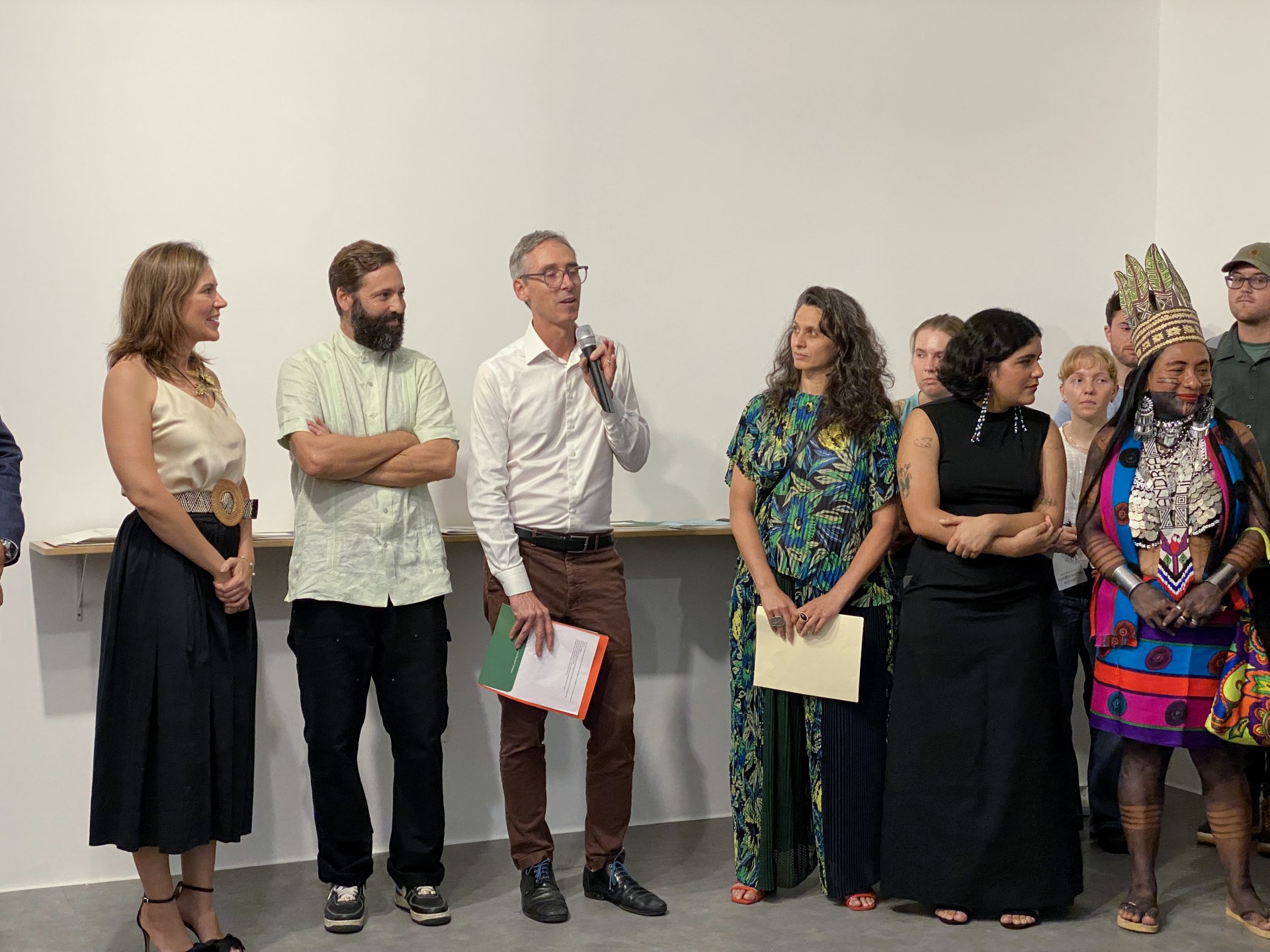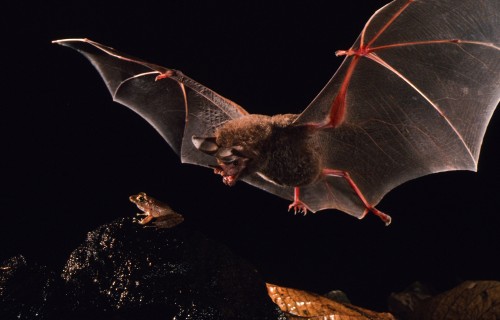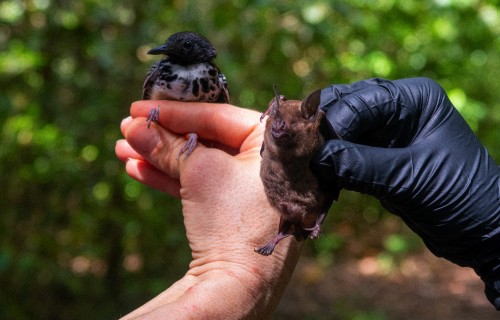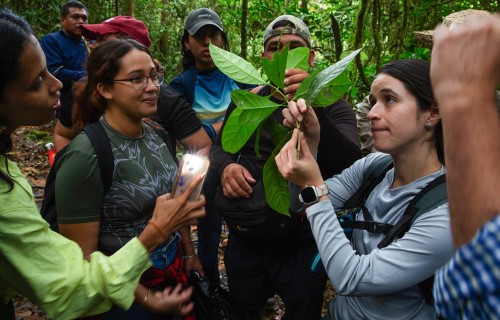Leafcutter ants have blind
spots, just like truck drivers
A different
perspective
Art and science converge in
Irene Kopelman’s latest work
By: Vanessa Crooks
Irene Kopelman’s most recent exhibit, which includes a new collaboration with the Smithsonian Tropical Research Institute, can be seen at Panama’s Museum of Contemporary Art.
“Una cuestión de encuadre” (A matter of framing), an art exhibit at the Museum of Contemporary Art (MAC) in Panama City, celebrates the long-term collaboration between Argentine visual artist Irene Kopelman and the Smithsonian Tropical Research Institute (STRI) and highlights the intersection of scientific research and art.
The exhibit, which opened in September, consists of different artistic projects in collaboration with STRI scientists since 2012.
One of the projects took Kopelman to Coibita Island, in the Western Pacific coast of Panama, to work alongside the Symbiosis & Resilience laboratory led by STRI scientist Matthieu Leray, whose team investigates the effects of climate change on coral reefs and the role of fish in these ecosystems. The project, Underwater Drawings/Coibita Coral Studies, is a series of 20 underwater drawings in colored pencil on waterproof paper, capturing coral life directly in its natural environment.
Two of the projects took place at Barro Colorado Island (BCI), the STRI research station located in the Panama Canal waterway.
At BCI, Kopelman collaborated with STRI staff scientist William Wcislo and his team from the Evolution, Behavior and Neurobiology Lab, during a research project on the behavior of nocturnal bees, which resulted in the project Astronomical Twilight.
With STRI staff scientist Erin Spear and the DEATH Lab (Disease Ecology Across Tropical Habitats), Kopelman explores the importance of fungi, death and decomposition in maintaining biodiversity in a forest, through the project Barro Colorado Watercolors/Fungi.
The artist also collaborated with STRI filmographer Ana Endara to create a short documentary which showcases Irene's creative process during the development of these projects, and the field trips in BCI.
In the video, Claudia Mamani, STRI intern in Wcislo’s Lab and member of Kaaijayu GYBN Bolivia, shows how they document the behavior of nocturnal bees in the changing light, in an experiment to find out if these bees can detect colors and use them to navigate in the twilight, whilst Kopelman created sketches of what she could see of the forest canopy as the light gradually disappeared.
The artist also followed RaMP-Up Fellow Fransuá Mar Otero of the DEATH Lab to examine the role of pathogenic fungi in forest diversity and health. With the roar of howler monkeys in the background, Mar Otero demonstrated how to spot the fungi-affected plant leaves, which inspired Kopelman to create a watercolor series showing the discoloration patterns in leaves as pathogens grow within them.
Wcislo and Spear also contributed essays for Kopelman’s upcoming book. A previous publication, Entanglement, Notes on Representation, Volume 7, which includes the work she produced during her visits to STRI between 2012 and 2015, also contains text by Wcislo, and by several other STRI scientists.
The artist Irene Kopelman, alongside STRI Director Josh Tewskbury and other guests during the inauguration of the exhibit at the MAC. The event also included the opening of another exhibit by artists and poets of the Guna, Emberá, Emberá-Wounaan and Ngäbe-Buglé communities. Credit: STRI
Kopelman has been collaborating with STRI since 2012, when she obtained a fellowship for artistic research from the Smithsonian. Throughout the years she has taken part in several field trips and explorations with several scientists and created a series of art projects that explore Panamanian biodiversity, documenting ecosystems such as coral reefs, mangroves, invasive species, and much more. In 2024, Erin Spear nominated her as STRI Research Associate, the first artist to receive this title.
Kopelman’s interest in working closely with scientists came whilst doing landscapes; she became curious about “why a landscape looks the way it looks, why a leaf has a certain pattern” and decided to approach the people whom she could ask those questions to. She also points out the importance of creativity in science, to solve problems whilst working on the field.
In her experience, both science and art are about curiosity. But unlike science, which tries to answer questions and solve problems, “art doesn’t need to solve anything,” she says. “I’m not interested in reaching any type of conclusion. Our job is more about leaving things open-ended. It’s better if things are left unsolved, so that it opens space for others to solve.”
The Smithsonian Tropical Research Institute, headquartered in Panama City, Panama, is a unit of the Smithsonian Institution. The institute furthers the understanding of tropical biodiversity and its importance to human welfare, trains students to conduct research in the tropics and promotes conservation by increasing public awareness of the beauty and importance of tropical ecosystems. Promo video.



